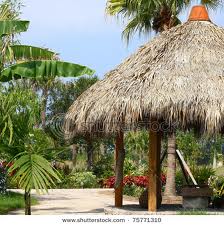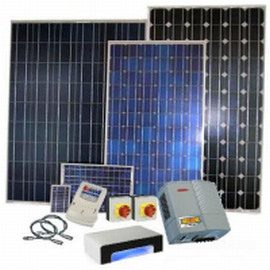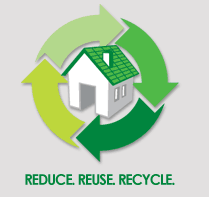Archive for the ‘Green Roofing’ Category
Solar Powered City
 New York City is known for its dense skyscrapers and trend setting ways. With so many people and buildings crammed into a tiny space, New York City faces many challenges when maintaining a high quality of live and keeping their carbon footprint limited. Now a new project stands to bring a big impact through solar roof panels installed around the city.
New York City is known for its dense skyscrapers and trend setting ways. With so many people and buildings crammed into a tiny space, New York City faces many challenges when maintaining a high quality of live and keeping their carbon footprint limited. Now a new project stands to bring a big impact through solar roof panels installed around the city.
The Big Apple
New York City Mayor, Michael Bloomberg, has approved a solar power project that intends to triple the city’s solar power production. 10 city-owned building will take part in the project and their roof will be home to enough solar panels to generate 648 kilowatts of power. The roof panels will be enough to power 143 households for up to 24 hours. While this may seem like a drop in the bucket for a city the size of New York the point isn’t that only 143 households worth of power will be generated, but that the city and local community is gaining a new found respect for the potential of alternative energy sources.
The green roof movement is very much a lead by example type of concept. Despite years of popularity and use in other countries, America is just now jumping on the bandwagon for alternative and green energy sources. Although New York City is far from being a completely solar powered city, it has much to gain in the future with the continued advancement of their green roof movement. Some of the buildings already contain rooftop gardens and green space, both of which bring a much needed sense of nature to residents while also cutting down on smog and providing a space to grow fresh produce.
Thatch Roofs out of Recycled Plastic Bottles

A professor at Duquesne University, Dr. David Saiia, has created a hand powered machine that cuts plastic bottles into strips that could be used to thatch a roof. Thatched roofs are the traditional roofing material in Ecuador and other tropical climates. The reeds can be locally produced and keep the home cool by allowing air to circulate. Due to more land being used to grow food, the grasses used for thatch are being pushed out and are getting increasingly harder to find.
Roof repair using steel and fiberglass are unsuitable as they let in more heat and are noisy when it rains.
Plastic Thatch Lasts Many Years
Dr. Saiia’s machine cuts the bottle into strips in seconds. Using 3 strips attached to bamboo or melting the ends together to create the length needed, they are then placed on top of a roof frame. Regular thatching lasts about 1 year, whereas the artificial thatch can last many years. The plastic thatch maintains the cooling advantage and allows natural light to come through into the home.
Dr. Saiia said he come up with the idea after witnessing the pile up of non-biodegradable waste in the middle of the South American Rainforest. He will continue to test the materials to ensure they are safe to use and not toxic. Each roof could consume 1200-1600 bottles and improve the local labor situation by creating jobs re-roofing houses.
Nashville Convention Centers New Green Roof

For the next 6 weeks workers will be covering about 4 acres of rooftop on the Nashville Music City Center with a water proof layer, soil with water wicking materials and sedums. Plants that are already growing on coconut fiber mats will be rolled out after the soil is blown onto the roof.
The convention center could get added insulation from the green roof, but the main goal of the new roof is to prevent the urban water runoff that overloads the city’s sewer system.
Overburdened Sewage Systems
Nashville like many other cities have outdated sewer systems that weren’t designed to accommodate large amounts of storm water and rain runoff from buildings. The runoff overflows the system and raw sewage washes into the creeks and rivers.
Excess water from the roof will flow down to drains in low spots of the roof and then routed to a container that will be used for flushing toilets and irrigation for the convention center in dry months.
Clay Holds the Rain Water
The soil is 80 percent marble sized baked clay and 20 percent compost. The clay chunks absorb water and release moisture as needed. The roof will be covered in sedums with small colorful flowers.
Landscape Support Services of Murfreesboro is putting in the green roofing system and will also be maintaining the roof afterwards.
You can follow along with the construction and get updates at www.nashivillemusiccitycenter.com.
Green Roofs Get Eco-friendly Boost
 Once a rare concept, green roofing has gotten more attention over the last few years. As more initiatives push for environmentally friendly products, the roofing industry joined suit. Now with green products that range from a roof made of pure vegetation to solar panels and recycled roof materials, the green roof idea has made a name for itself in the market.
Once a rare concept, green roofing has gotten more attention over the last few years. As more initiatives push for environmentally friendly products, the roofing industry joined suit. Now with green products that range from a roof made of pure vegetation to solar panels and recycled roof materials, the green roof idea has made a name for itself in the market.
Researchers are now looking for more ways to further improve an already green product and bring about more eco-friendly benefits.
In The Lab
Researchers at the University of British Columbia’s Okanagan campus have been looking into ways of making green roof products more environmentally friendly. A professor and team of students are developing ways to increase the green footprint of green roofs by testing common green roof products in different environments.
The idea is to test roof materials in various climates that may shed some light on how thesproducts can be beneficial to specific regions around the world. Further, the team is hoping to develop a product that is more absorbent of greenhouse gases and toxins commonly found in urban ozone’s.
Green Roof for Colorado Hospital

Boulder Community Hospital Foothills campus will be getting a new green roof over the cardiology building in East Boulder. The maternity ward will have full view of the native grasses set to open in December 2012.
The architect who came up with the idea, Nick Rehnberg said the new moms will have movie screen views of the Flatirons rock formation instead of gazing out onto an industrial looking roof.
The Green Roof Will Pay for Itself
The new Anderson Medical Center Cardiology building will have a 46,000 square foot roof. It is estimated to cost more than a traditional industrial roof but is expected to save $750,000 per year in cooling costs. The roof will pay for itself in approximately 7 years.
Ron Secrist, president of the Boulder Community Hospital Foundation is hoping for donations of 9 to 30 KW worth of solar panels for the new roof. In 2007 approximately $700,000 worth of panels were installed to generate about 90,000 kilowatt hours of electricity per year. After 10 years Namaste solar will give the panels to the hospital, in the meantime the hospital pays a set rate.
Recycled Plastics for Solar Mounts

Rooftop photovoltaic panels are being mounted on bases made from recycled plastics. The plastic bases are made from both 100% recycled and mixes of virgin and recycled resins. There are only a few manufacturers in the United States making the bases or mounts.
Roof Contractors like the product because it is lightweight and if dropped will not damage the roofing membranes like the heavier and sharper metal bases do.
Gaining Popularity
Although relatively new on the market, plastic mounts are gaining popularity over the stainless steel and aluminum bases being used now.
“Our product is less expensive than aluminum and definitely less than stainless, but the real cost savings comes in speed of installation, prevention of damage to roof membranes and wiring, and improved grounding.” Said John Hudson of Renusol America.
Lighter Weight
Consumers like that the product is “green”, 100% recycled, easier and lighter to handle, and requires fewer parts and tools to assemble.
A Few Drawbacks
Since Underwriters Laboratories cannot be sure where the recycled materials came from, the tests are unable to certify that the plastic product meets the flammability and resistance to electrical ignition sources requirements.
Another issue with the plastic mounts is the warranty is usually not as long as the warranty on the solar panels.
Good for the Environment
As more technologies emerge, recycled plastic bases will be more cost effective and easier for the installer to mount as well as being good for the environment.
Solar Kit in a Box
 Westinghouse is one of the newest producers of an affordable “all in one Rooftop solar kit” that roof contractors or do it yourselfers can install all at once or over time. The low cost and ease of use is what makes this kit appealing to homeowners. Contact your roofer to inquire if they are qualified to do these installs.
Westinghouse is one of the newest producers of an affordable “all in one Rooftop solar kit” that roof contractors or do it yourselfers can install all at once or over time. The low cost and ease of use is what makes this kit appealing to homeowners. Contact your roofer to inquire if they are qualified to do these installs.
The kit contains integrated racking and inverters, roof brackets with fasteners, roof flashings and panel splices. There are 3 kits available, a 20-panel kit, a 4 panel kit and a 1 panel kit. You will still need to contact an electrician to add wiring to the rooftop and have a circuit breaker installed in the home’s electrical service panel.
Up to 70% of Electrical Needs
Depending on the set up you purchase, the kits can cover up to 70% of your home’s electrical needs. The Westinghouse system requires 80% fewer parts to install, making it easier to maintain through the years. The panels are covered under warranty for 25 years and the inverters for 15 years.
The costs of rooftop solar systems have fallen over the last couple of years, and the systems have become easier to install. Other companies with solar in a box kits are Armageddon Energy and Solar Clover, Kyocera and MyGen Kits and Grape Solar panel kits.
Free Electricity After 5 Years
The price of the kits is unclear on the website, but they did offer some examples of costs for different areas with state and federal incentives. ” Now, paybacks in many states are less than five years – after which homeowners get free electricity from their system,” said Barry Cinnamon, CEO of Westinghouse Solar.
According to the Westinghouse Solar web site, you must have a minimum of 300 square feet of sunny roof space, own your own home, and your utility company offers good solar incentives than you will be a good candidate for Westinghouse Solar Power Systems. You can call their number for retailers near your home at 1-888-400-0668. Lowes currently sells Westinghouse Solar Panels.
Discovery Park at UNT

University of North Texas began construction on a 1.5 million, 1200 square foot research facility called Discovery Park. The facility will be used for students and faculty who are involved in sustainable building and sustainable energy to test the technologies. Included are solar panels, geothermal and wind energy connected to a smart grid system. “It’s a facility that tests technology for buildings that will have net-zero consumption of energy,” said Costas Tsatsoulis, dean of UNT’s College of Engineering.
The discovery park building will be made up of removable walls and floors enabling researchers to test the effectiveness of new sustainable materials. 1/3 of the research facility will be a furnished living area and the other 2/3 will be a laboratory. The facility will be on a smart grid system and solar panels. The electricity generated will help power the lab, any extra energy will go back into the electrical grid.
A private company, Solar Logic, 5 students and 2 faculty members will use solar simulator testing to help develop a lightweight affordable way to produce solar power. Weather simulation will be used to test multiple projects simultaneously, testing products in different situations and locations. One of the goals is to produce smaller solar panels that that will stand up to the elements and make it more viable for businesses and home owners.
Jacobs Engineering Group Inc. and the general contractor Nouveau Construction, hope to have the project completed in early 2012. Funds from the higher education’s assistance from the state, operating funds and donations by Acme Brick, Axium Solar, Schneider Electric, Nuconsteel and Benchmark Precision Buildings are helping to fund the $1.5 million facility.
Recycled Roofs Come From Many Sources
 The roof is the face of your home! A bad roof can quickly downgrade the look and appeal of your home. Luckily, there are many new roof materials that can improve the look of your home while working towards saving the environment.
The roof is the face of your home! A bad roof can quickly downgrade the look and appeal of your home. Luckily, there are many new roof materials that can improve the look of your home while working towards saving the environment.
Even better is the money that will be saved by reducing energy consumption. Many homeowners are cashing in on the advantages of installing “green” products in their homes; but with so many new, energy-efficient products it can often be overwhelming to decide which product is best for your home.
Reduce, Reuse, Recycle
Of all the recent trends in “going green”, many quality products are being made from sources we never would have guessed. There are many unusual products that can be recycled into a quality roof material. Things such as carpet, milk jugs, soda cans and tires can all be used in making new roof products.
- Milk jugs make for a great source of plastic that can be recycled into shingles. These shingles have a wood-like feel to them and look great. Recycled plastic shingles are modeled to look like cedar shingles, except they provide more resistance to weather elements and pests. These shingles are mold, insect, bacteria and moisture proof; proving to be one of the most maintenance-free products on the market today.
- Recycled carpet also produces a wood-like shingle. These shingles are light weight and easier to install. Shingles made from old carpet are more environmentally friendly than traditional asphalt shingles, as they do not give off toxic chemicals. Between reducing the large amount of space that is taken up in landfills by carpet, along with reusing it to produce an environmentally conscious product, makes recycled carpet shingles a great choice for homeowners.
- Roofing shingles made from recycled tires are great insulators and can drastically reduce the energy consumption of a home. These shingles are highly durable, providing great resistance to high winds and extreme weather elements. Recycled tire shingles are also one of the most fire resistant roof materials on the market.
Just think about all the trash you throw out each week; much of this trash is able to be recycled into many great products. Not only does the house get a new roof, but the landfills will get a much needed break from overcrowding.
NYC Rooftops Are Going Green

A recent trend in NYC has developers and homeowner’s alike turning wasted rooftop spaces into living green roofs. The roofs are a system of waterproof membranes partially or completely covered with plants, tree’s or grasses. One of the most popular rooftop plants is sedum, known for its absorbent leaves and hardy nature.
Green roofs lower energy costs by providing insulation, absorb rainwater run off and help reduce pollution. Green roofs can absorb up to 70% of rainwater, making it appealing to New Yorkers since the excessive rainwater run off has been burdening their drainage systems which then overflows with raw sewage.
The rooftop trend is in part due to tax incentives and grants that have been given since 2008 for installing green roofs. The costs of converting the roofs to green roofs have also fallen. Green roofs can increase the roof life span dramatically while also increasing the real estate value.
Cool Roofs, another green roof technology has been one of the focuses of the mayor of New York City, Michael Bloomberg. The NYC CoolRoofs Project’s website claims 1,355,869 square feet of rooftops have been painted with a white reflective coating in the last year. White roofs cool the roof tops, lower energy costs and reduce carbon emissions and the heat island effect.
Saving money, beautifying the city, and lowering the city’s heat index by converting empty rooftops. New York City is catching up fast to other US cities in the push to go green.






